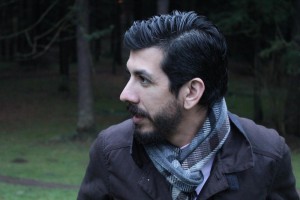
On the flight to El Salvador, everyone speaks Spanish. On the flight out of El Salvador, half the plane seems to speak English. The girl I have a face off with as I leave the bathroom says, “sorry.” When I take off my headphones to hear what the flight attendant is saying, he asks, “what do you want to drink?” How do the english speakers get to El Salvador if they aren’t on the flight there? The beach towns are full of blond Americans and Australians and Germans I haven’t seen on the flights to or from the country.
I haven’t written about the struggles. El Salvador is a tough place to live. Some days you turn on the tap and there is no water. $4 to $6 a day is a typical salary in the countryside, if you’re lucky enough to work, but prices in stores are close to US prices. It’s hot and the mosquitoes are hungry. The driving philosophy is either “go with the flow” or “stay out of the way.” Most places have a guard who carries a shotgun. Some guards only have a machete. Grade school-age kids lead the cows down the road to the pasture in the morning. Kidney disease and diabetes are common. And there’s the assaults and kidnappings and murders. They keep us off the bus, within the gates of our dorm, and in taxis approved by Francisco although I never feel threatened or that I’m in an unsafe space. It’s not the same for Salvadorans, including our hosts in the Baja Lempa.
One morning in the middle of the trip, I hear a series of shots while I shower at 6:30 in the morning. “Shooting a pig,” I tell myself, even though there are almost 10 shots followed by more that seem to be from a second gun. I dress and walk around the block to pick up breakfast. There are 5 or 6 people outside the house where we eat, including a woman who is crying. I’m told that the crying woman’s daughter was killed and I learn later that the girl is one of three young people that were killed in the shooting. Apparently, they were gang members. The following week we hear about another “incident” that involves the cousin of someone from the organization we are working with. People lock themselves in their houses when it gets dark and they avoid certain roads or trips that aren’t absolutely necessary, but they live here. Well, they live here if they haven’t left to the U.S. or to Panama (Ciudad Romero was founded by Salvadorans who were exiled in Panama for over 10 years during the civil war in the 1980’s. The children who were born in Panama can live there –I’m not sure if they have citizenship or just residency. Both the families I’ve eaten my meals with in Ciudad Romero have children who returned to Panama as adults for better economic opportunities. Both also have family in the U.S. )
In the classic surf movie The Endless Summer, a running gag is that the pair of surfers arrive at each spot to the welcome, “you should have been here yesterday” (when the waves were good). On the last beach weekend, the idea that El Salvador has seen better days seems visible. At El Zonte, there are decaying and abandoned beach hotels. One swimming pool that was built alongside the sea wall has fallen onto the beach. I wonder when the better days were. Was it the late 90’s in between the civil war and the rise of civilian violence? I didn’t think there were good days then. Were there ever better days, or was it a promise that never came true?
El Zonte is where I had my most enjoyable Salvadoran experience this trip. I was walking down the rocky beach to take pictures of the collapsed swimming pool when a kid whistled to get my attention. He was part of a group of small boys who were playing with surfboards that were broken in half. They were in the little whitewater surf near shore, and even though they had broken boards they were able to catch waves and stand up. In between sets, they were sliding down the rocky incline on the beach. The reason the boy whistled was because he saw my camera and wanted some action shots. I took a few photos of them sliding down the rocks and showed them on the lcd screen. Then I offered videos and all the boys were excited. They lined up on the rocks to slide down together though they never got the coordination right, and I also got footage of them surfing. They said they use the broken boards since they don’t have boogies and that they learned to surf on their own.
I never made it down the beach for the abandoned pool photos.
For better or worse, I am not bothered by ambiguity. I don’t stress about where things are going to end up. The positive spin is that I trust that everything will work out in the end, or if it doesn’t, that I can recover from whatever does happen (or not happen). Unfortunately, this patience and acceptance can sometimes be too passive. I’m trying to figure out where and when to push.
Tweet of Advice: Always get a licuado. Always take the bag of juice. Never get the water in a bag. #hydration. #sabor #nobagwater
Digital Story: Mexico



You must be logged in to post a comment.